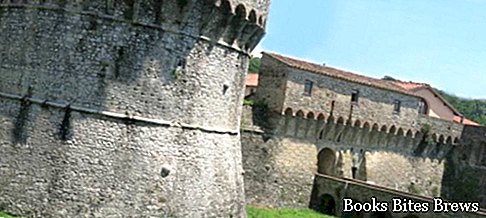What to see in Sarzana, itinerary including the main monuments and places of interest, including Firmafede Fortress, Santa Maria Assunta Cathedral and Pieve Sant’Andrea.
Tourist information
City of Liguria in the province of La Spezia, Sarzana is located in the heart of Lunigiana, on the border with Tuscany and close to the Tyrrhenian coast.
The first inhabited center of Sarzana, dating back to the eleventh century, is located on the left bank of the Magra river, in correspondence with the ancient communication routes and at the foot of a low hill, on top of which once stood a small fortified village, corresponding to the place where the Sarzanello Fortress is located, built in the fifteenth century.
The depopulation following the decline of nearby Luni, which became uninhabitable, favored the birth and expansion of the village of Sarzana, which was in a more favorable position than the ancient and splendid city of Luni, founded in 177 BC. by the Romans, whose ruins today testify to its richness, achieved thanks to its port and trade derived from the extraction of marble from the nearby Apuan Alps.
The center of Sarzana is protected by the four remaining towers of the ancient city wall and by two mighty strongholds, the Sarzanello Fortress, which dominates the town from above, and the Citadel, also called Firmafede Fortress, which stands on the edge of the walls towns, near the Roman gate.
The two strongholds were built in place of pre-existing structures, in the fifteenth century, during the domination of the Florentine lordship of the Medici.
Via Mazzini, which runs from Porta Romana to Piazza Matteotti, is the main street of the historic center, corresponding to the stretch of the ancient Via Francigena that passed through Sarzana.
It is the street where prestigious palaces overlook, the Impavidi theater, the ancient parish church of Sant'Andrea and the beautiful cathedral of Santa Maria Assunta, which is located between via Mazzini and the square dedicated to Pope Niccolò V.
What see
The Cathedral of Santa Maria Assunta was built on the site of an ancient parish church dedicated to San Basilio, from the beginning of the thirteenth century until the middle of the fourteenth century.
In the fifteenth century it was internally decorated and Leonardo Riccomanni da Pietrasanta was commissioned to complete the facade.
Further works, in Baroque style, date back to the seventeenth century, until completion in 1735, with the laying on the facade of the statues of Saint Eutichiano, Pope Sergio IV and Pope Niccolò V.
Recommended readings- San Remo (Liguria): what to see
- Liguria: Sunday day trips
- Gallinara (Liguria): what to see on the island
- Noli (Liguria): what to see
- La Spezia (Liguria): what to see
The church, covered in white marble, is in the late Gothic Tuscan style, its interior has a Latin cross and three naves, while in the chapel to the left of the main altar, stands the Cross of Maestro Guglielmo, also called Croce di Sarzana, a painted cross made by a Tuscan artist in 1138.
The Pieve di San’Andrea, dedicated to the patron saint of Sarzana, was built between the end of the tenth and the beginning of the eleventh century.
In later periods it underwent renovations in Gothic and Baroque style, in particular in the sixteenth century its original Romanesque layout was transformed, from three naves to a single single-aisled hall.
On the facade, the sixteenth-century portal with jambs decorated with two caryatids, is dominated by the oldest seal in the city.
Today the parish church, with its Romanesque bell tower, has been restored to its medieval appearance, and has regained its original sobriety, without the Baroque stuccos added in the seventeenth century.
In Piazza Matteotti stands the Palazzo Comunale, a remarkable building designed by Giuliano da Majano in 1473, completed in 1554 by the architect Antonio Roderio and restored in 1933 by Eng. Giulio Mazzocchini.




